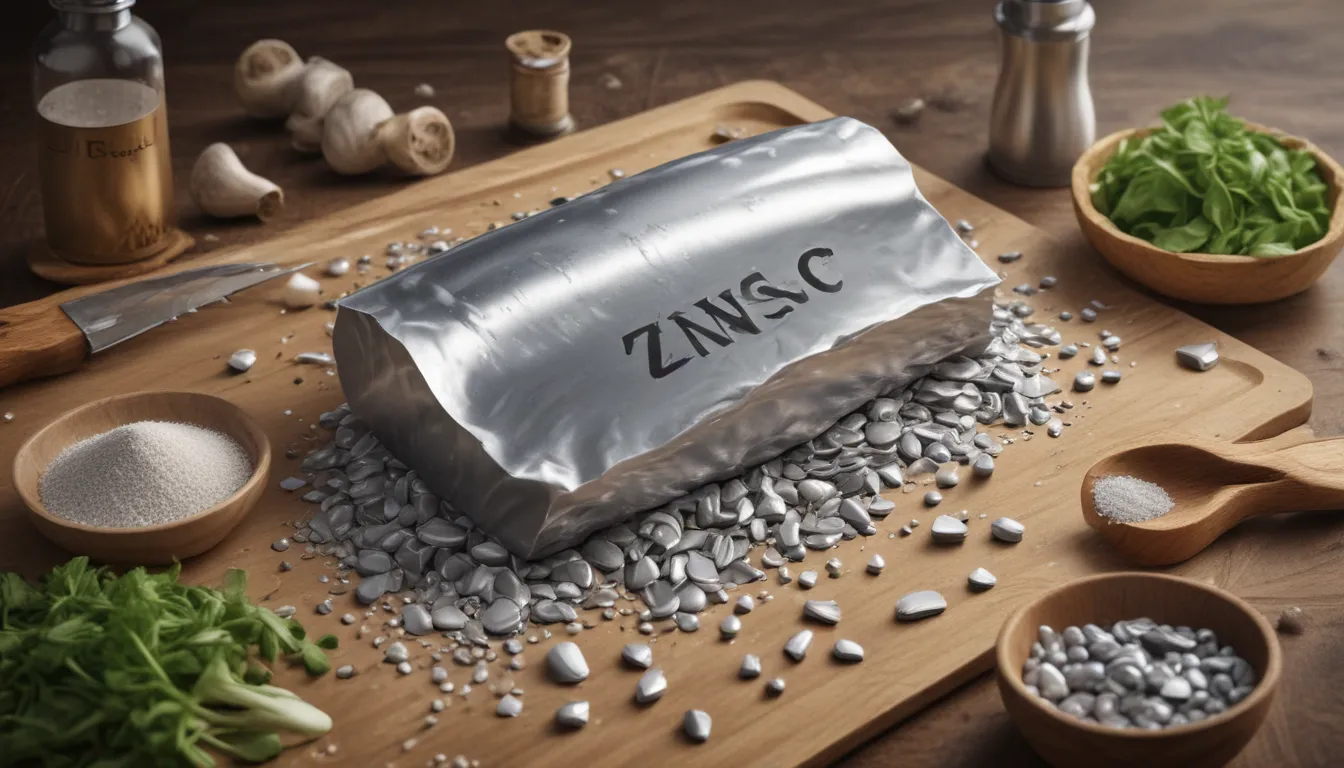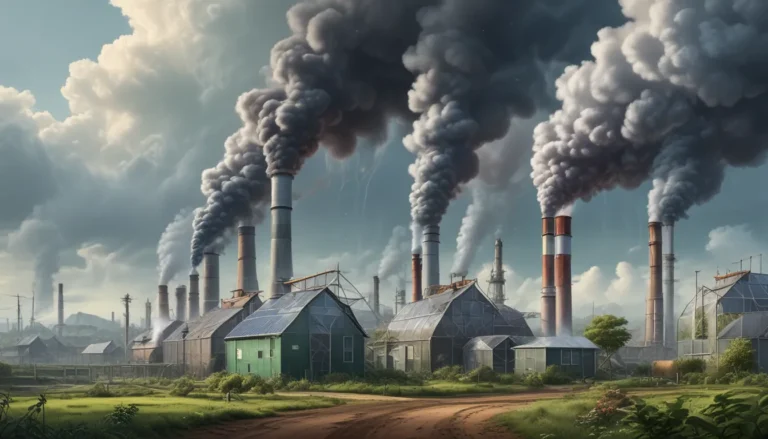A Note About Images: The images used in our articles are for illustration purposes only and may not exactly match the content. They are meant to engage readers, but the text should be relied upon for accurate information.
Welcome to a journey into the fascinating world of zinc! This often-overlooked mineral is a powerhouse when it comes to both our health and the industries that shape our world. From its vital role in boosting our immune system to its use in preventing rust in construction, zinc is truly a versatile element with a broad range of applications. Join us as we delve into 20 intriguing facts about zinc, shedding light on its significance in our bodies and the world at large.
Unveiling the Mysteries of Zinc
Zinc, with the chemical symbol Zn and atomic number 30, is a fundamental element with unique properties. It is a slightly brittle metal that appears shiny and grey when oxidation is removed. Despite its unassuming appearance, zinc plays a critical role in various biological processes. It is the first element in group 12 of the periodic table, showing similarities to magnesium in its chemical behavior.
- The name “zinc” originates from the German word ‘zinke,’ meaning pointed, possibly referring to the sharp zinc crystals that form during smelting.
- Zinc is the 24th most abundant element in Earth’s crust and has five stable isotopes.
Zinc’s Vital Role in Human Health
Zinc is an essential mineral for all living organisms, serving as the active site in over 300 enzymes crucial for biological functions. It plays a key role in immune function, wound healing, DNA synthesis, and cell division. Additionally, zinc is necessary for our senses of taste and smell.
- The human body contains approximately 2 to 3 grams of zinc, with the highest concentrations found in the brain, muscle, bones, kidney, and liver.
- Zinc deficiency can lead to various health issues, such as growth retardation, impaired immune function, hair loss, and skin lesions.
Zinc’s Impact on the Environment
Beyond its role in biology, zinc plays a significant part in the environment. From galvanizing iron to production of brass and other alloys, zinc is a versatile element with a broad array of environmental applications.
- Around 70% of the world’s zinc is mined, with the remaining 30% obtained from recycled sources.
- Zinc is the 23rd most abundant element in Earth’s crust, present in air, soil, water, and ultimately in the food we consume.
Exploring the Historical Uses of Zinc
Humans have harnessed the power of zinc for thousands of years, with historical evidence dating back to ancient civilizations like the Romans and Greeks. However, zinc was not identified as a distinct element until later in history.
- The earliest use of zinc was in an alloy called brass (a mix of copper and zinc) dating back to the 10th century BC.
- Large-scale production of zinc metal began in India in the 12th century, with advancements in extraction techniques occurring in the 18th century.
Zinc’s Ubiquitous Presence in Industries
Zinc’s anti-corrosive properties make it a valuable material in industries like construction, automotive, and battery manufacturing. Its versatility extends to non-structural castings, alloys, and various industrial applications.
- Galvanizing, a process that coats iron or steel with zinc to prevent rusting, accounts for half of zinc’s consumption.
- Zinc oxide, a compound of zinc, is used in paints, cosmetics, plastics, rubber, pharmaceuticals, and sunscreens for its UV protection properties.
Zinc’s Emergence in Modern Technology
Advancements in technology have opened up new avenues for zinc’s application in the tech industry, particularly in the development of batteries and electronics.
- Zinc-air batteries, which oxidize zinc with air to generate power, are used in hearing aids and experimental electric vehicles due to their high energy densities.
- Zinc is also utilized in LCD screens for its transparent conductive coating, offering a cost-effective alternative to traditional materials.
Championing Recycling and Sustainability in Zinc Production
Recycling plays a pivotal role in sustaining zinc resources, reducing the need for additional mining and processing.
- Recycled materials contribute nearly 30% of the world’s zinc supply, showcasing the metal’s recyclability and its role in sustainable practices.
- Developed countries boast high recycling rates for end-of-life zinc products, emphasizing the metal’s efficiency and sustainability in the recycling sector.
Zinc’s Impact on Global Health
Zinc supplements are widely recognized for their potential to improve health outcomes, especially in regions plagued by zinc deficiency.
- Supplementation with zinc has been shown to alleviate the severity and duration of diarrheal episodes, reduce respiratory infections, and support healthy growth in children.
- The World Health Organization endorses zinc supplements for children with diarrhea, acknowledging their significant role in enhancing child health and survival rates.
Embracing the Future of Zinc
Looking ahead, zinc will continue to be a cornerstone of both health and industry, promising new advancements and opportunities.
- Innovations in zinc battery technology could revolutionize energy storage, making renewable energy sources more accessible.
- Ongoing research into zinc’s health benefits may unveil new therapies and supplements, enhancing its global health impact.
- The growing emphasis on sustainability is expected to boost demand for recycled zinc, promoting efficient resource use and conservation.
- Efforts to enhance zinc mining and processing methods will likely reduce environmental impacts, making production more sustainable.
- As technology evolves, zinc’s contributions to corrosion resistance, battery technology, and health supplements will remain invaluable, securing its relevance in the future.
Celebrating the Wonders of Zinc
In conclusion, zinc’s multifaceted benefits span from enhancing our health to safeguarding our environment. While it is a valuable mineral, balance is essential to prevent adverse effects. Prioritize dietary sources rich in zinc, such as meat, legumes, and nuts, before considering supplements. Consulting a healthcare provider for personalized advice on supplementation is advisable. Zinc’s impact on environmental sustainability, especially in galvanization, underscores its significance beyond human health, making it a mineral that not only nurtures life but also preserves our planet.
Striving for Quality and Authenticity
Our dedication to delivering reliable and engaging content drives us to maintain the highest standards of accuracy and credibility. Each fact on our site is contributed by actual users, ensuring a diverse range of insights and information. Our meticulous editorial process guarantees that the facts we share are not only fascinating but also trustworthy. Trust in our commitment to quality and authenticity as you explore and learn with us. Together, let’s discover the wonders of zinc and its transformative impact on our world.






